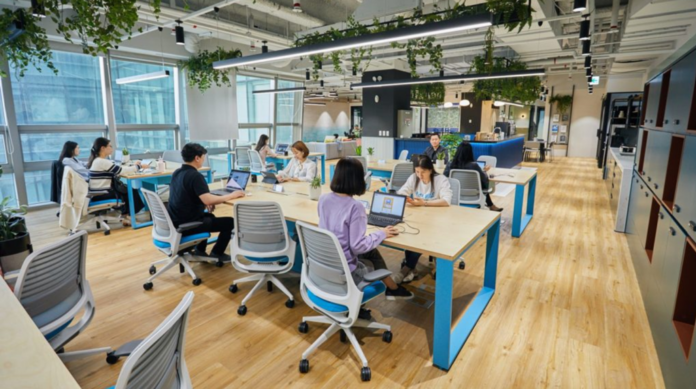Over the past decades, the use of mobile technology has increased and the attitude towards work has changed, making it possible to work anywhere at any time. However, workers still seek work environments that stimulate networking and collaboration possibilities. This has led to the growing popularity of co-working spaces.
The popularity of co-working spaces has increased over the past years (e.g. Huwart, Dichter, & Vanrie, 2012; Moriset, 2013; Parrino, 2015). Co-working spaces are dynamic, inspiring and low-cost workplaces where people (from different business backgrounds) can interact, share knowledge and co-create (Fuzi, 2015; Spinuzzi, 2012). Their popularity is the result of ‘a shifting attitude towards work’ (Sykes, 2014, p. 142), namely self-employed people and other individual professionals are increasingly looking for a workspace outside their home because they feel lonely when at home and want a better balance between their work and personal life (Fuzi, Clifton, & Loudon, 2014; Moriset, 2013).
However, according to multiple studies (e.g. Fuzi, 2015; Merkel, 2015; Parrino, 2015; Sykes, 2014), several users can be distinguished, namely self-employed workers, small firms, large firms, extended workers and students. Users of co-working spaces value working in a co-working space because of casual small talk, knowledge sharing and brainstorming with other co-workers (Deskmag, 2015).
Although there are several types of co-working spaces, they share the same core values, namely: collaboration, community, accessibility, sustainability and openness (Kwiatkowski & Buczynski, 2011). Collaboration refers to working together with other co-workers. In addition, at a co-working space, because of its open-work environment, spontaneous interactions frequently occur between users (Gerdenitsch, Scheel, Andorfer, & Korunka, 2016; Hillman, 2011; Roth & Mirchandani, 2016).The main value of the community is that it is open and accessible to everyone. In this community, co-workers can find other people, ideas and other resources, share experiences, learn from each other and celebrate each other’s successes (Moriset, 2013; Waters-Lynch & Potts, 2017).
As for the attribute atmosphere and interior aesthetics, a homelike interior has the highest part-worth utility. The estimates on this level show that co-workers on average prefer a modern interior the least and a homelike interior the most. On the other hand, co-workers with a higher education level have a higher preference for a modern interior. These co-workers might prefer a more professional work environment than co-workers with a lower education level.
With regard to the layout of the co-working space, co-workers have a higher preference for a semi-open layout. This semi-open layout consists of open workspaces in combination with concentration/meeting rooms. It seems that co-workers have a higher preference for work environments that can support all their work activities.
The main motivations for co-workers to work in a co-working space were that they were looking for a workplace outside their home that allows them to work in an inspiring work environment where the accommodation is affordable. Accessibility and atmosphere/interior are the most important characteristics when choosing a specific co-working space.
Analysis
This article is relevant to the Dayton co-working thesis project as it covers the topic of how co-working spaces are used. The article solely focuses on the indoor space, which is helpful to understand first, before jumping into the outdoor realm. Creating a productive atmosphere is something that I will need to hone in on, which this article discusses thoroughly. Comprehending the complexities of the interior office space and how the layout is one thing that this article touched on that will be extremely important in pursuing. This article also talks about the different kinds of companies, professionals and users that outsource co-working spaces, which will be important to analyze when considering all the stakeholders associated with the space. It’s also interesting how some of the data from the early 2010’s touches on the loneliness of working from home, which will translate perfectly to the post-Covid era of finally being able to meet up with others.




